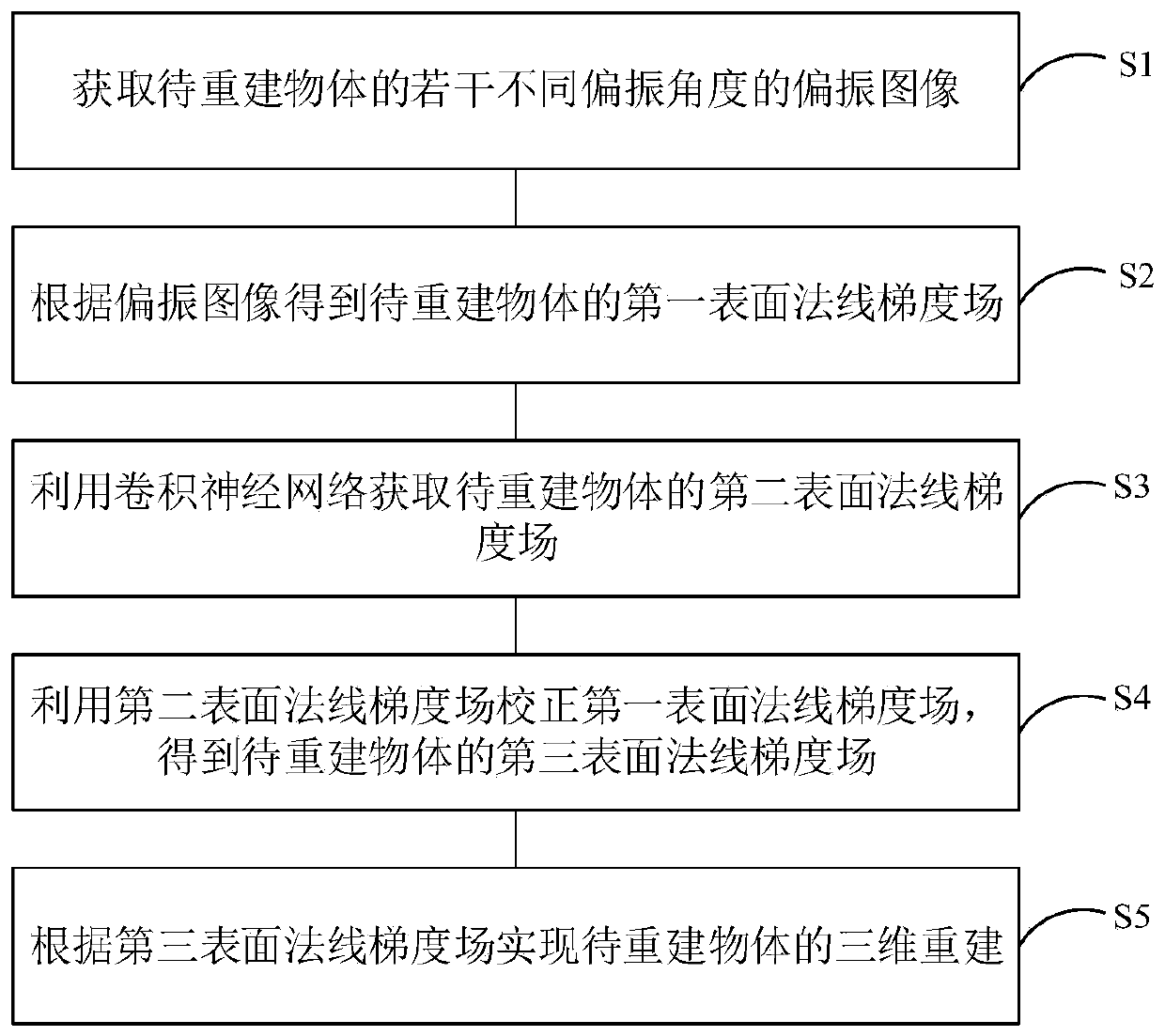Passive polarization three-dimensional reconstruction method based on CNN correction
A three-dimensional reconstruction and polarization technology, applied in the field of computational imaging, can solve the problems of limited development, low reconstruction accuracy, and high reconstruction difficulty, and achieve the effects of overcoming distortion of three-dimensional reconstruction results, eliminating shadow interference, and high reconstruction accuracy.
- Summary
- Abstract
- Description
- Claims
- Application Information
AI Technical Summary
Problems solved by technology
Method used
Image
Examples
Embodiment 1
[0061] See figure 1 , figure 1 It is a schematic flow chart of a CNN-based passive polarization three-dimensional reconstruction method provided by an embodiment of the present invention. As shown in the figure, the CNN-based passive polarization three-dimensional reconstruction method of this embodiment includes the following steps:
[0062] S1: Obtain polarization images of several different polarization angles of the object to be reconstructed;
[0063] Specifically, see figure 2 , figure 2 It is a schematic diagram of a polarization image shooting process provided by the embodiment of the present invention. As shown in the figure, the object to be reconstructed in this embodiment is a face image. When obtaining the polarization image of the object to be reconstructed, first select the object to be reconstructed and the camera position; set a polarizer of equal height and coaxiality between the camera and the object to be reconstructed, and ensure that the relative pos...
Embodiment 2
[0102] See Figure 5 , Figure 5 It is a schematic flow chart of another passive polarization 3D reconstruction method based on CNN correction provided by the embodiment of the present invention. As shown in the figure, the specific steps of the CNN correction-based passive polarization 3D reconstruction method in this embodiment are as follows:
[0103] Step 1: Obtain four standard polarization images of the object through the camera;
[0104] Step 2: Use the Stokes vector to calculate the polarization degree of the object surface, and at the same time, calculate the normal azimuth angle of the microfacet on the object surface, and use the convolutional neural network to obtain the second surface normal gradient field of the object;
[0105] Step 3: Calculate the normal zenith angle of the microfacet on the surface of the object according to the degree of polarization of the object;
[0106] Step 4: Calculate the normal gradient field of the first surface of the object acco...
PUM
 Login to View More
Login to View More Abstract
Description
Claims
Application Information
 Login to View More
Login to View More - R&D
- Intellectual Property
- Life Sciences
- Materials
- Tech Scout
- Unparalleled Data Quality
- Higher Quality Content
- 60% Fewer Hallucinations
Browse by: Latest US Patents, China's latest patents, Technical Efficacy Thesaurus, Application Domain, Technology Topic, Popular Technical Reports.
© 2025 PatSnap. All rights reserved.Legal|Privacy policy|Modern Slavery Act Transparency Statement|Sitemap|About US| Contact US: help@patsnap.com



